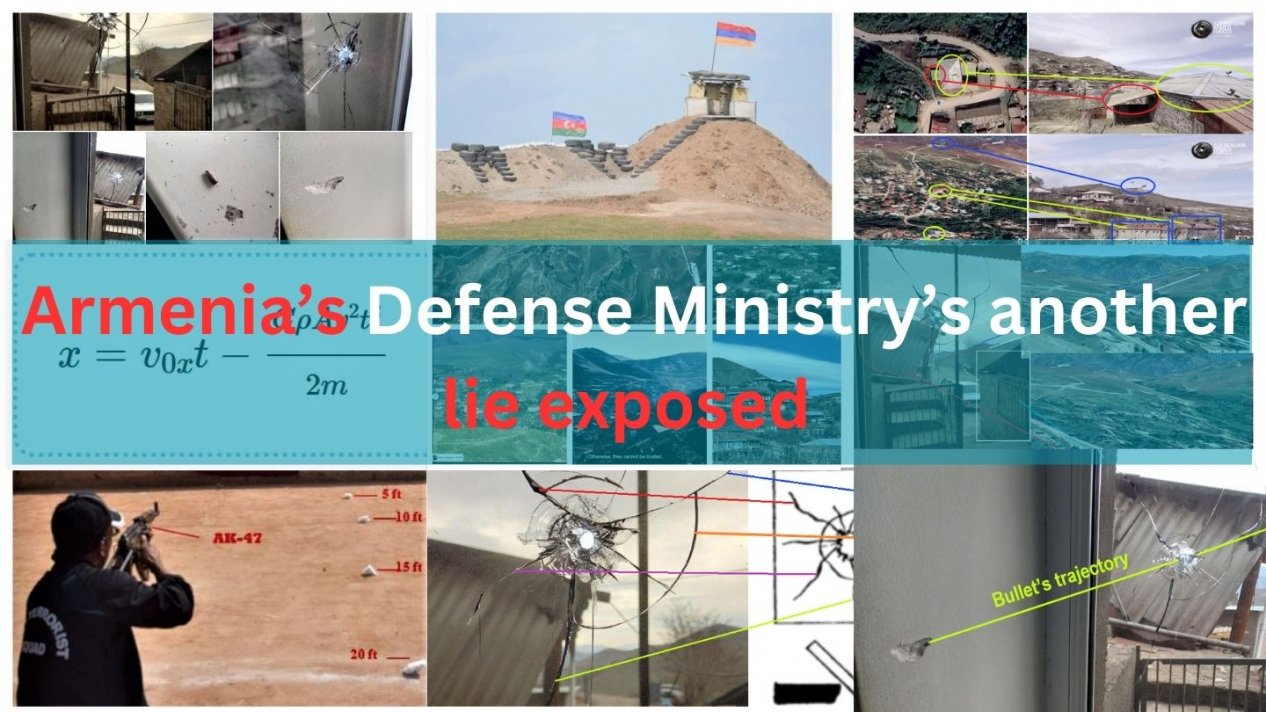
On 31 March, Armenia’s Defense Ministry (DM) released information that the Armed Forces of Azerbaijan had allegedly fired on Khnatsakh village of the Syunik province. According to the same information, a house had seen damage but no injuries were sustained among the civilian population. This was shared by the Press Secretary of the Defense Ministry on an official social media account.
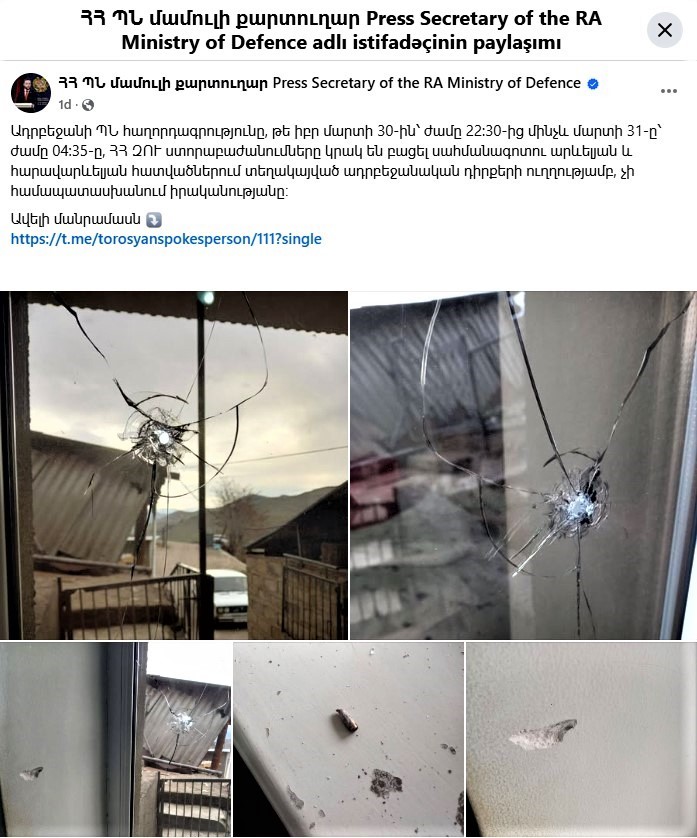
This post was eventually circulated across Armenia’s media.
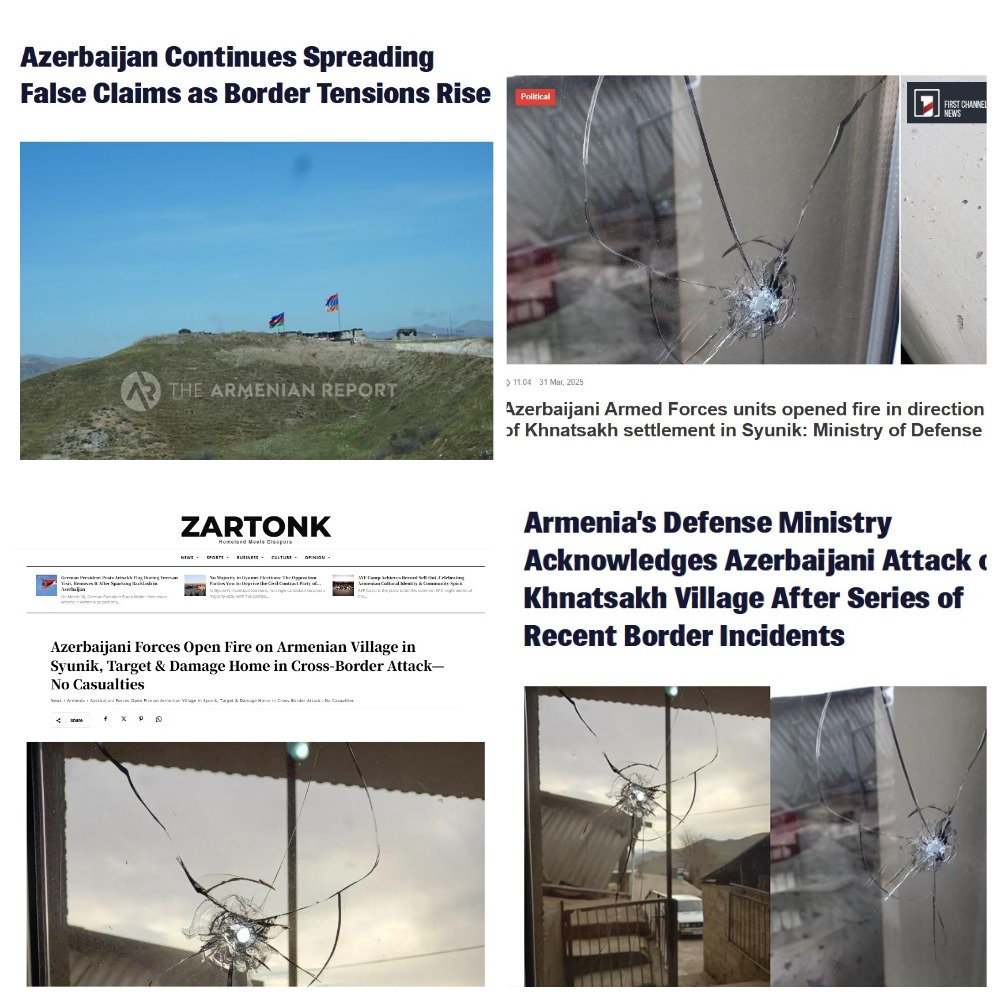
The likes of Ehsan Mohavedian, an Iranian expert known for his staunch anti-Azerbaijan position and a pro-Armenian Vitali Milonov, member of the Russian State Duma, were quick to react.
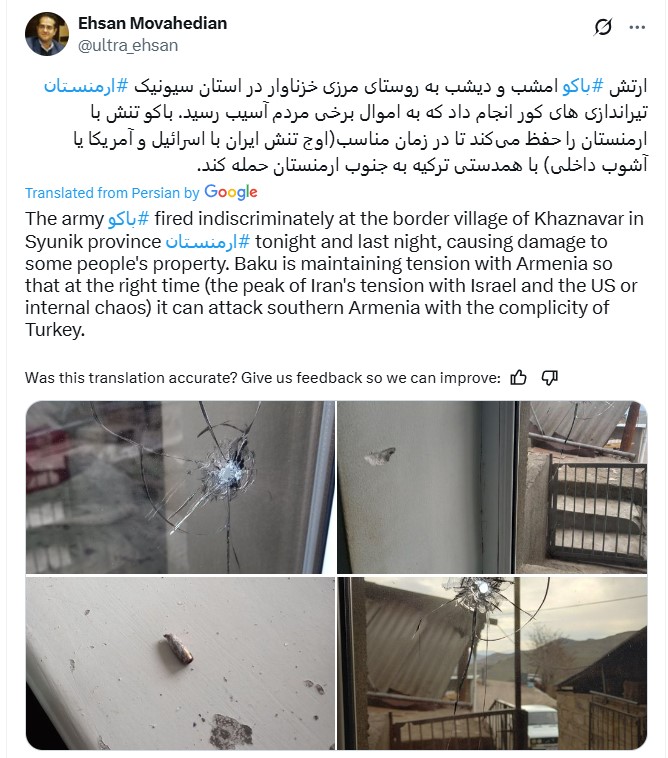
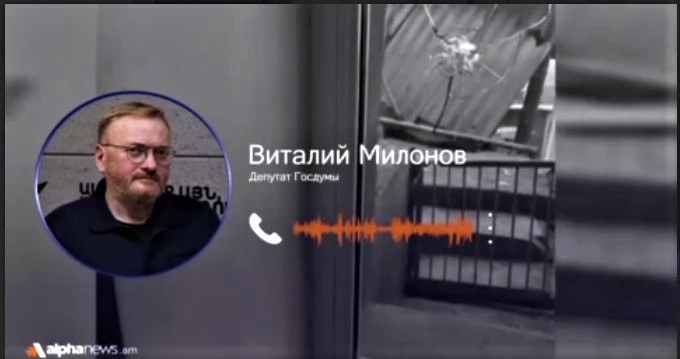
Azerbaijan’s Defense Ministry, rejected that information, and called it another disinformation by the Armenian side.
Faktyoxla Lab. (Factchecking Lab.) investigated the veracity of those claims.
Armenia’s Ministry of Defense released photos showing a bullet hole in a window, damage to a wall, and a deformed shell casing.
Accurate assessment of the bullet hole dimensions in the window, the shattered glass (notably absent from the images released by the Armenian side), and the deformed shell casing would require a proper ballistic examination. Nevertheless, some irrefutable facts have emerged even with the virtual examination of the released images.
Khnatsakh is the Armenian village located closest to the provisional border with Azerbaijan.
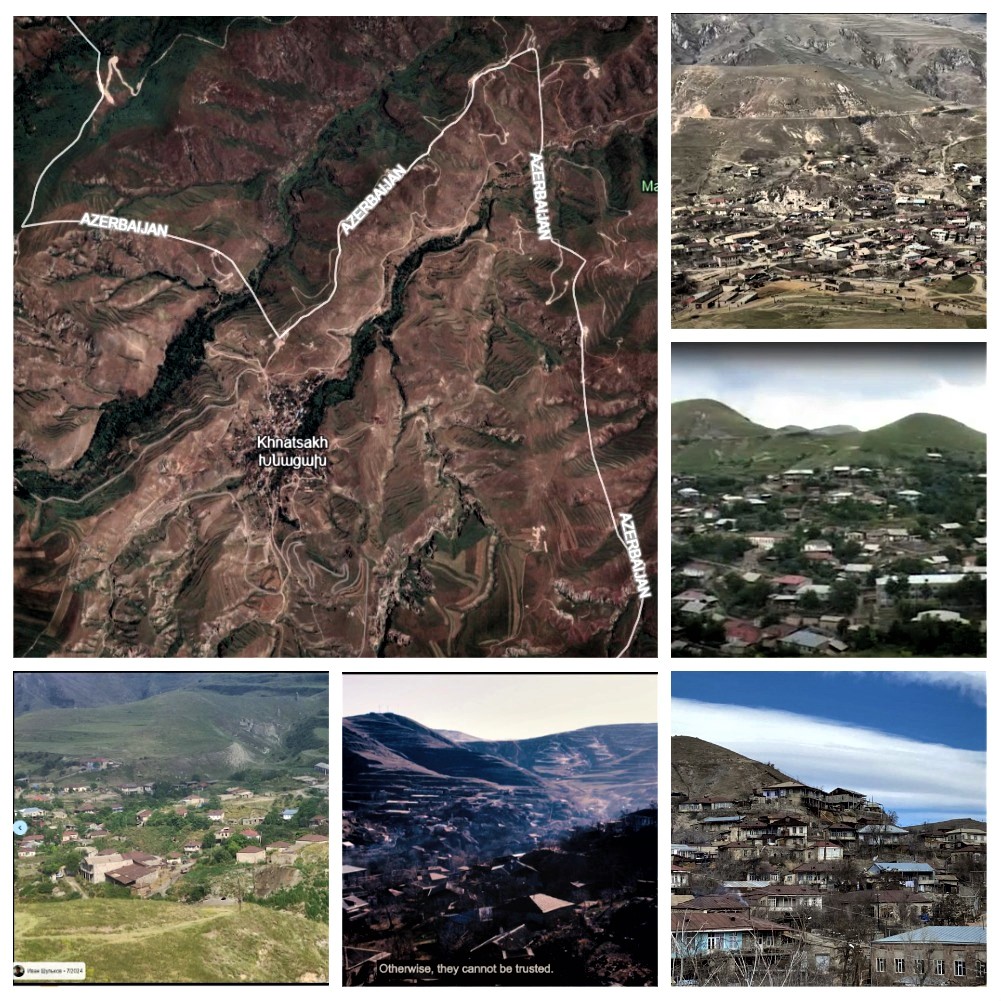
It should be noted that the images in the media, depicting the close proximity of the two countries’ outposts were taken near that very village.
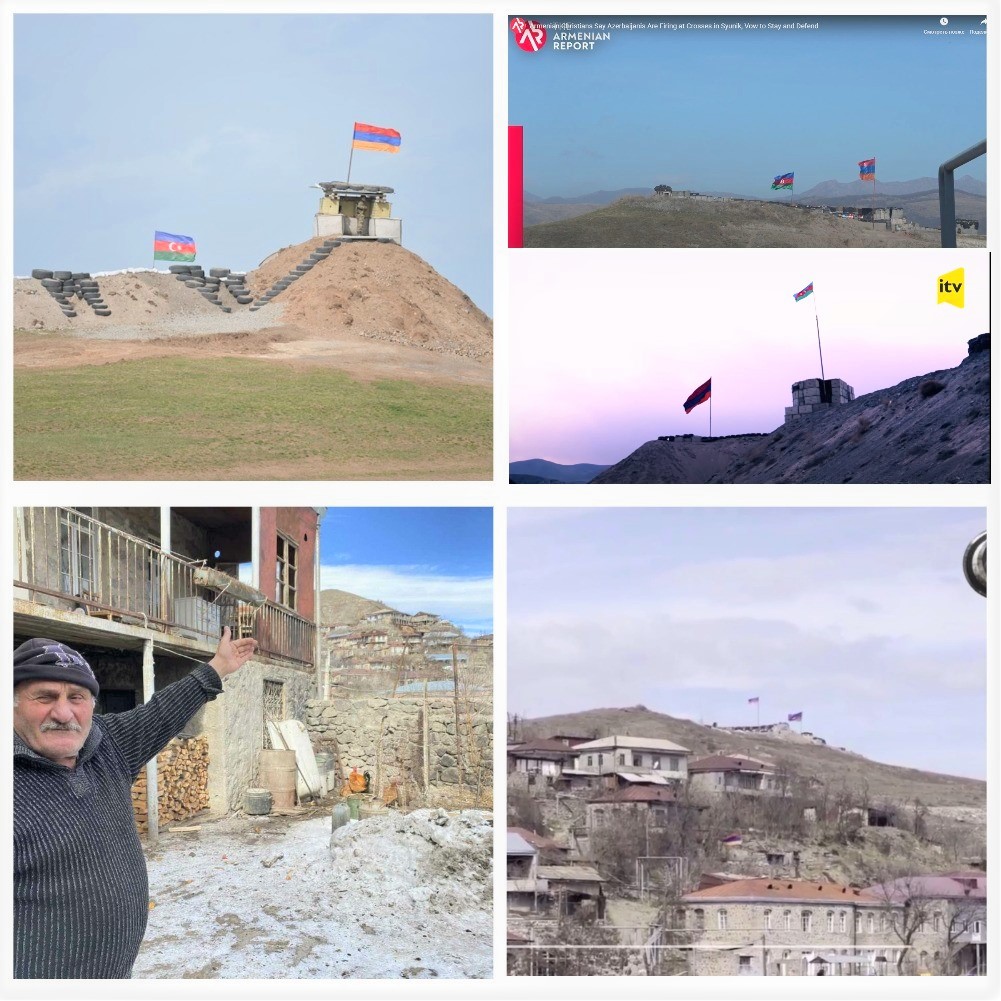
Method 1. Geolocation Analysis
Images of the position where Azerbaijani soldiers are stationed are clearly visible in the video released by the Armenian side.
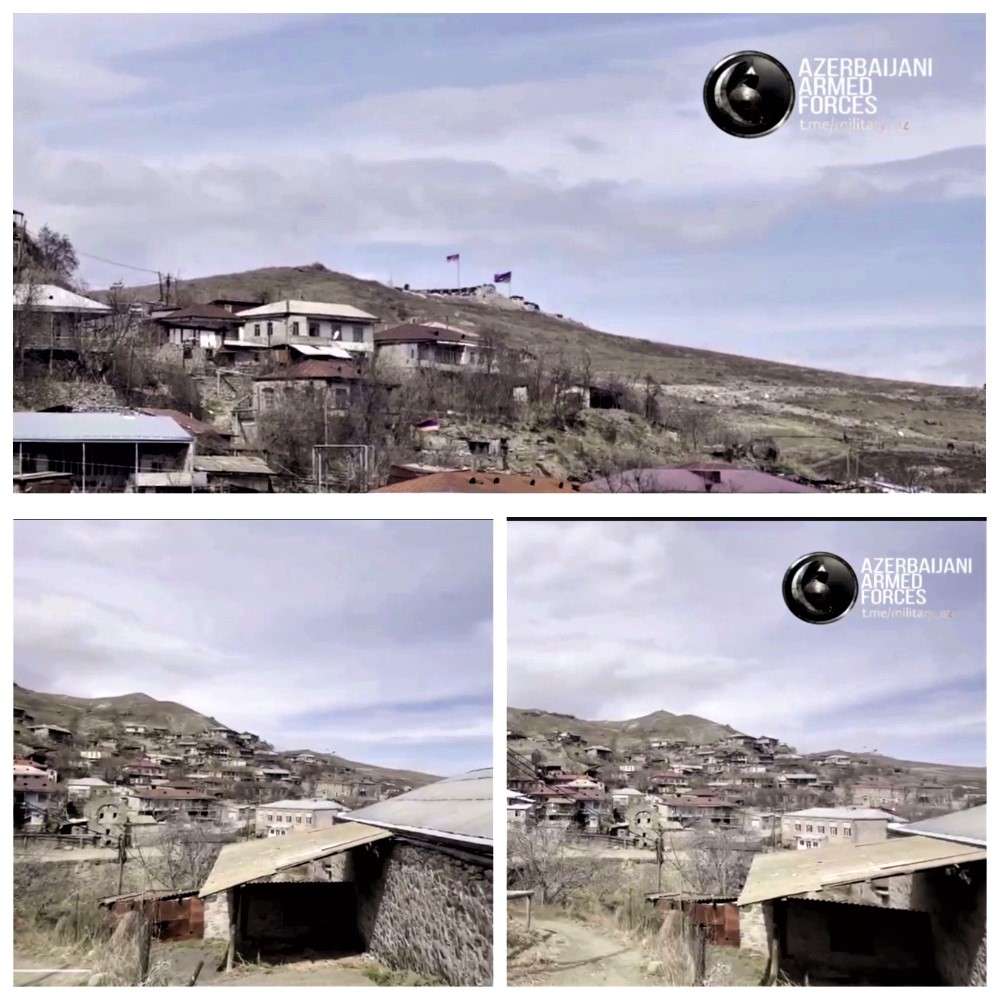
This is how we determine the geolocation of the vantage point from which the video was captured.
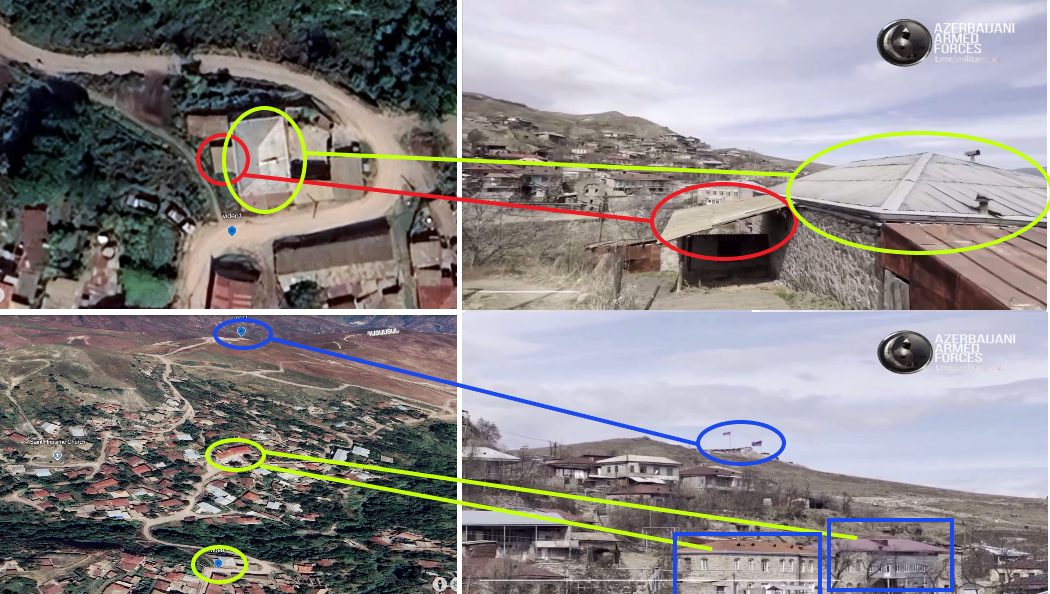
And this is the footage of the village captured by the ITV television channel, filmed from the position where Azerbaijani servicemen are stationed.
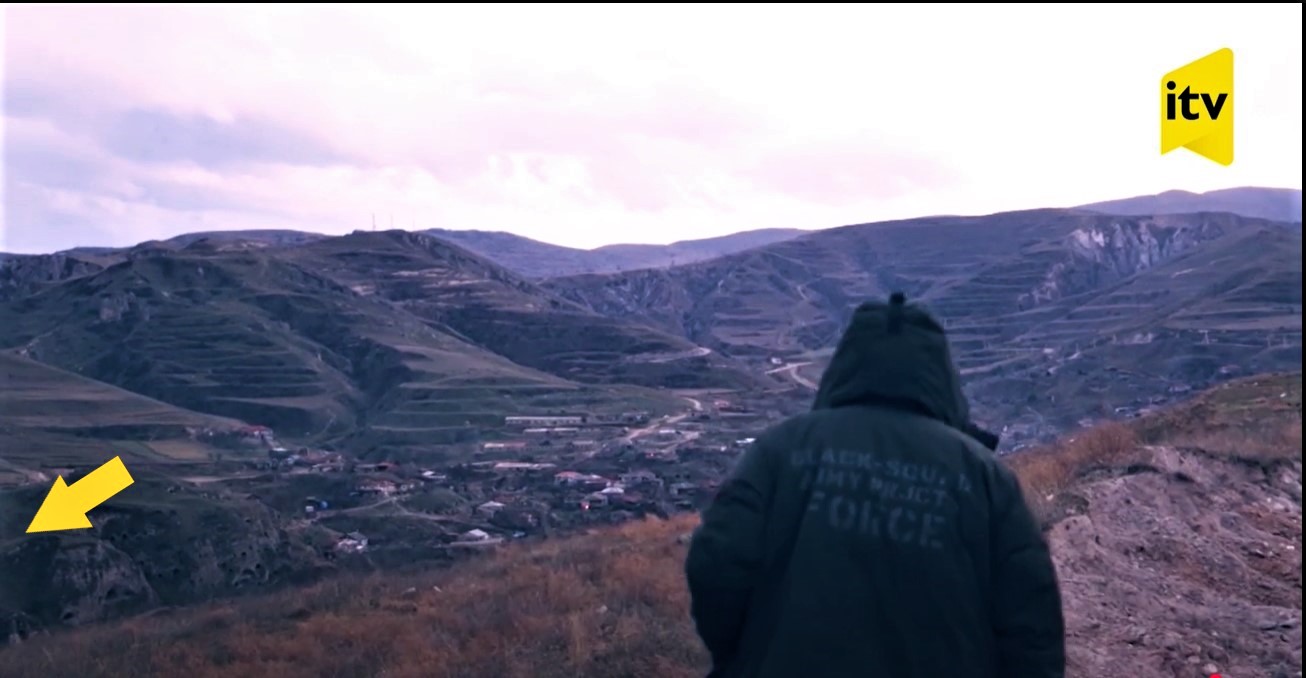
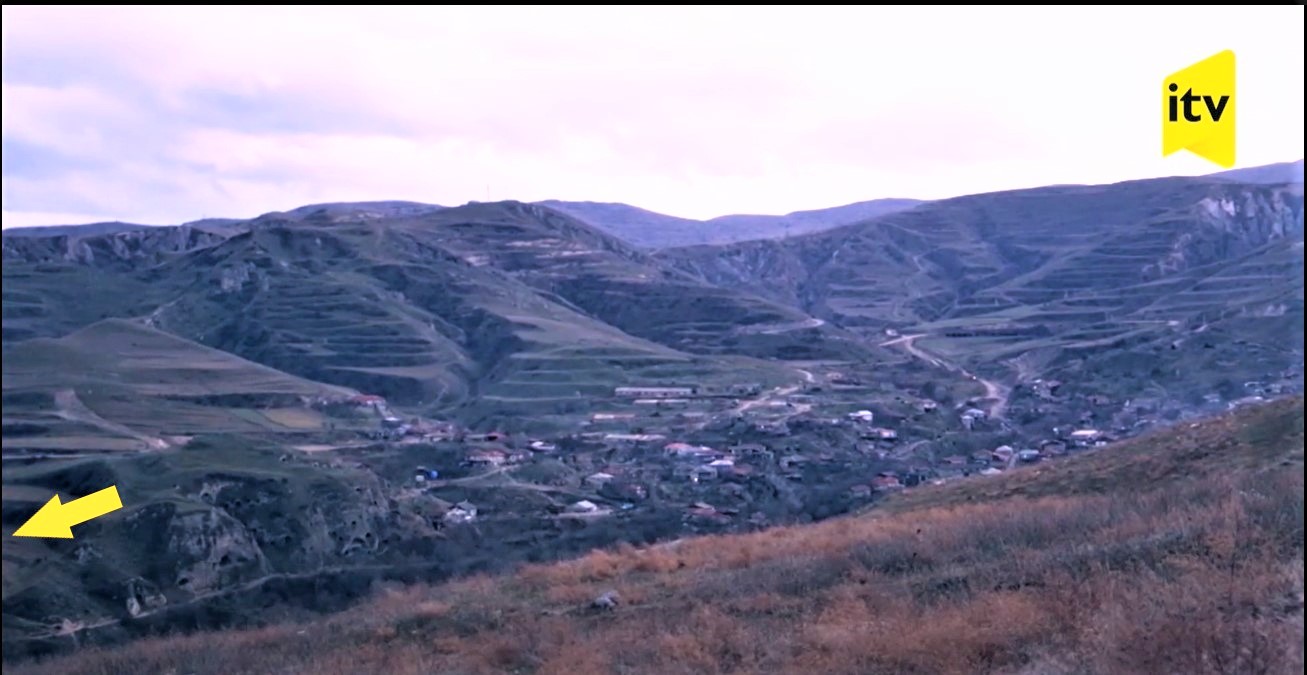
The landscape seen through the window in the reportedly taken image corresponds to the left-hand side of the view presented in ITV’s footage.
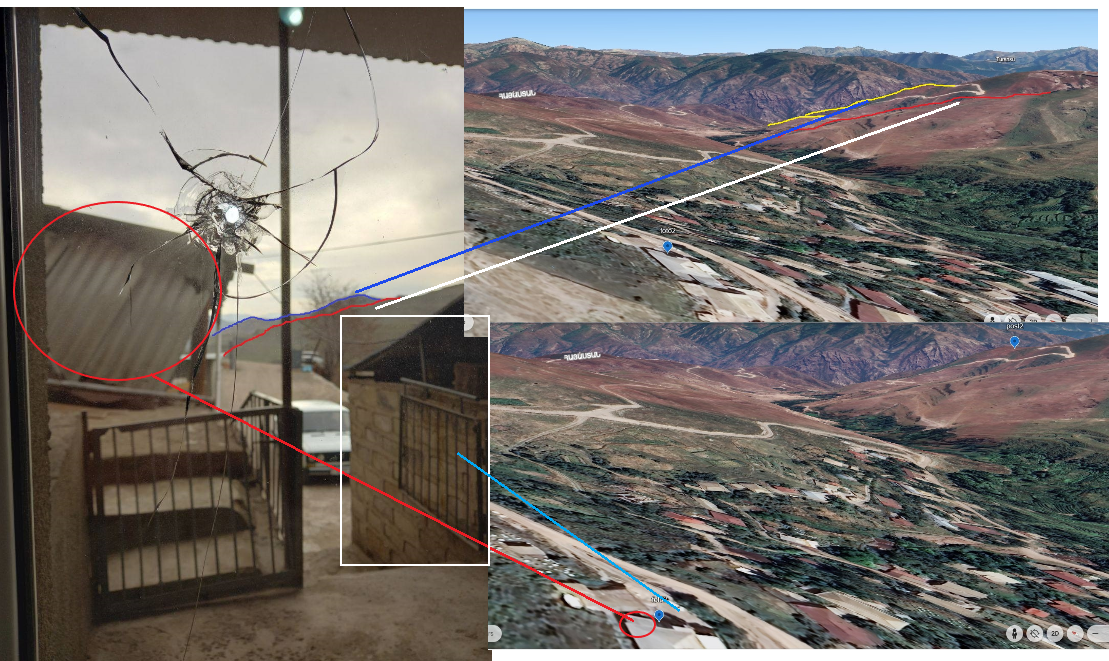
Based on our analysis, the distance between the identified house and the Azerbaijani outpost is 565 meters.
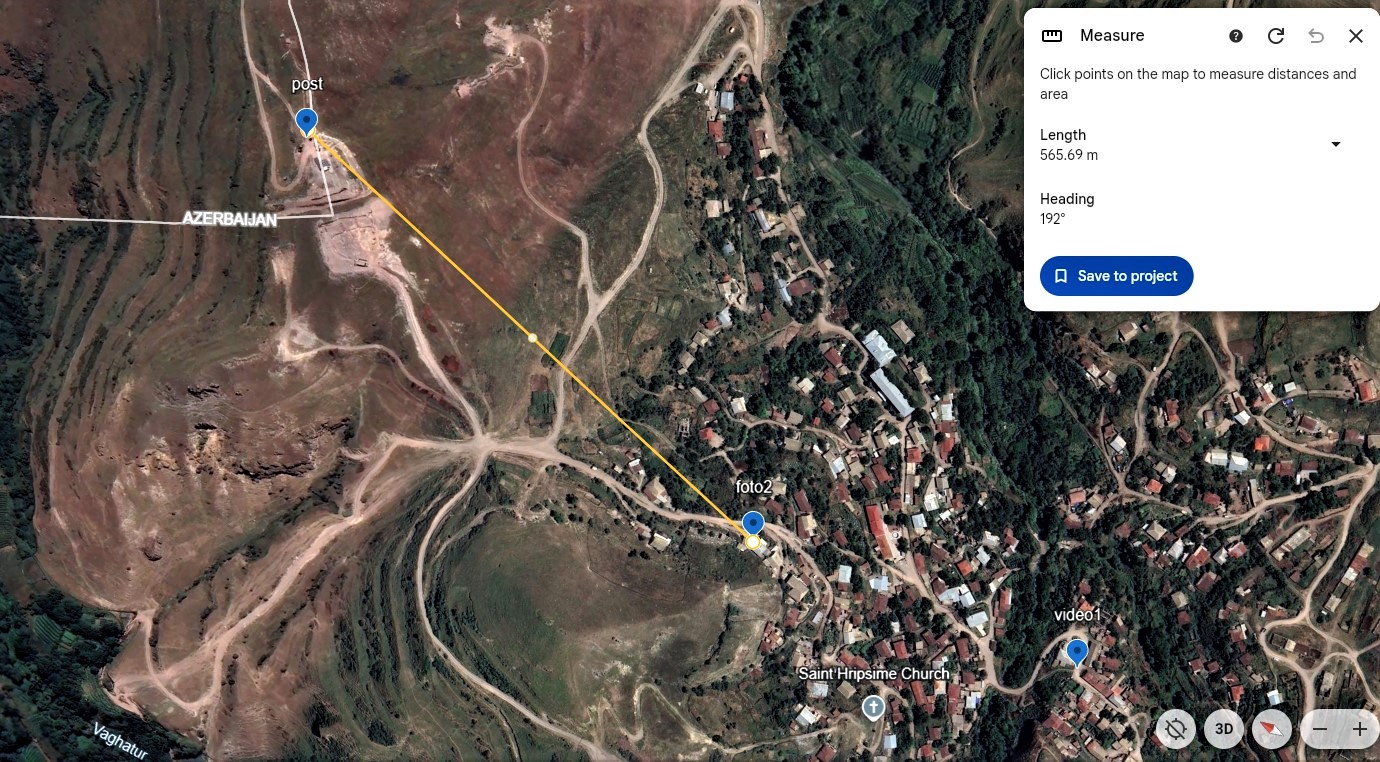
However, the house with the allegedly damaged window is not visible in the aforementioned footage captured by the ITV crew. Therefore, we searched for a nearest Azerbaijani outpost that could possible be used to fire on that house. Using Google Earth, we determined that the territory of Azerbaijan nearest to the point visible from the house's window is approximately 2,404 meters away.
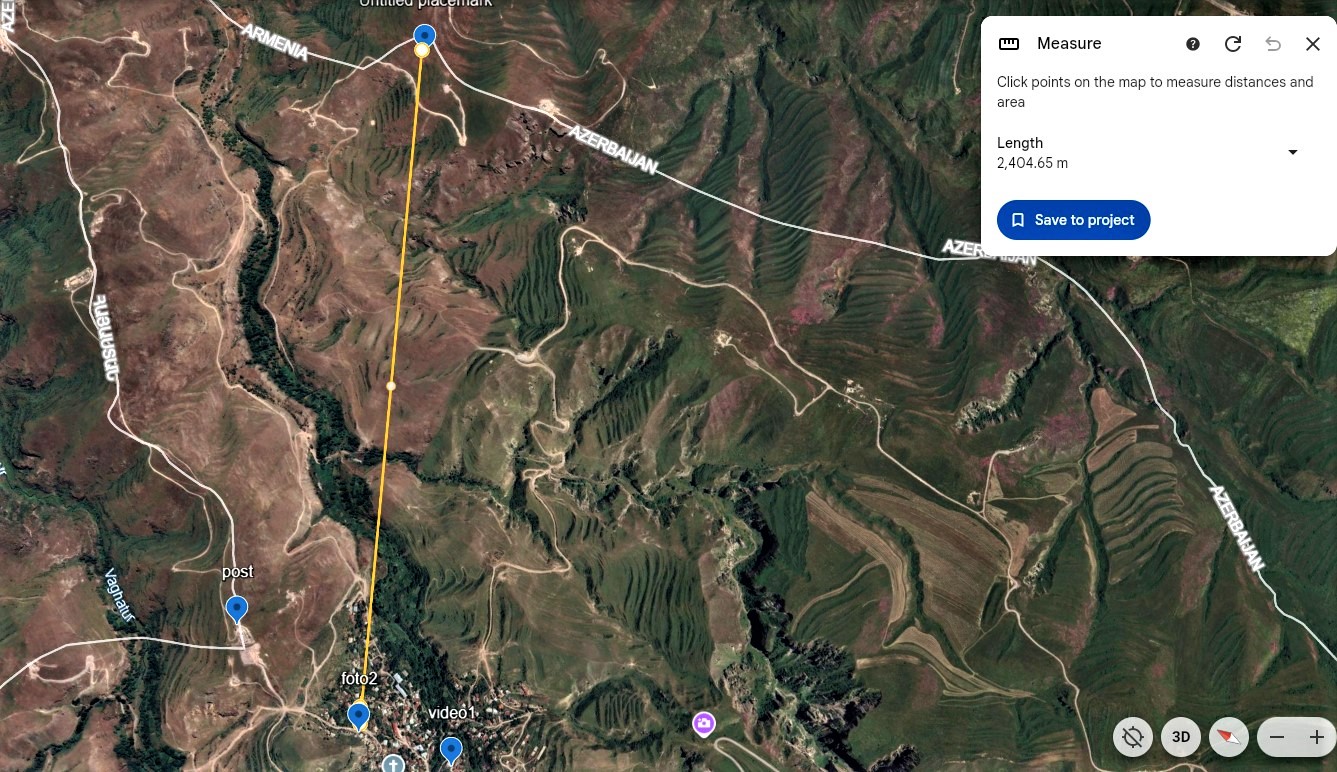
Judging by the shell casing, it belongs to the Kalashnikov AK-74 assault rifle (7.62mm x 39 mm). Below are the tactical and technical specifications for that weapon:
|
Muzzle velocity, m/s |
715 |
|
Effective firing range, m |
800 |
Maximum range, m 350 (point-blank range for a target 50 cm tall)
1500 (retained lethal effect of the bullet)
3000 (maximum flight distance of the bullet)
It's important to note that the effective firing range is 800 meters, while the maximum range can extend to 3,000 meters.
If, as Armenia's Ministry of Defense claims, the Azerbaijani soldier was such an exceptional marksman that he managed to hit a window one-tenth the size of the house, appearing as a matchbox from a distance of 2404 meters, it would certainly be a record-breaking achievement. However, no geographical parameters, laws of physics, or logical reasoning corroborate the possibility of such an event. Firing from such a distance is an extremely difficult task - especially with a Kalashnikov assault rifle. Further details are presented through additional methods.
Method 2. Analysis based on Laws of Physics
Glass struck by gunfire typically exhibits two distinct types of fractures: radial cracks and concentric cracks.
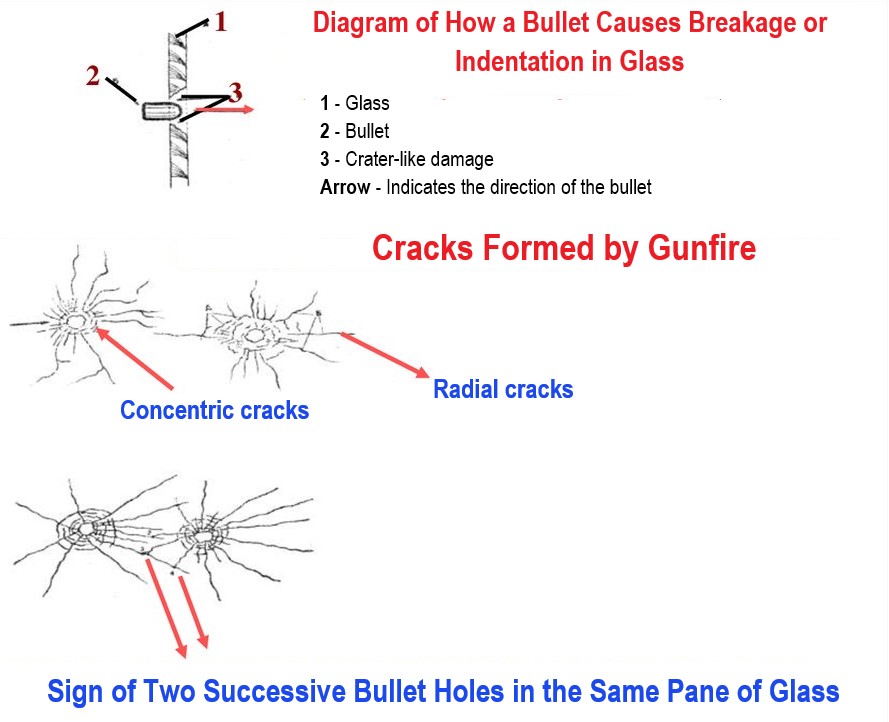
In forensic experts analyze the dimensions and characteristics of the bullet crater on glass to determine key variables such as the shooting distance, angle of impact, and the type of firearm used.
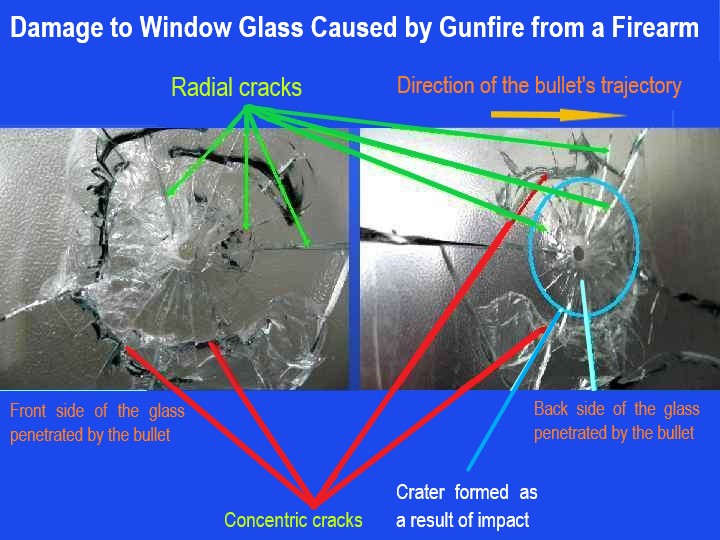
The image shows large (1) and small lines (2), a piece of glass broken after the fire, and the fragments created by the cracks.
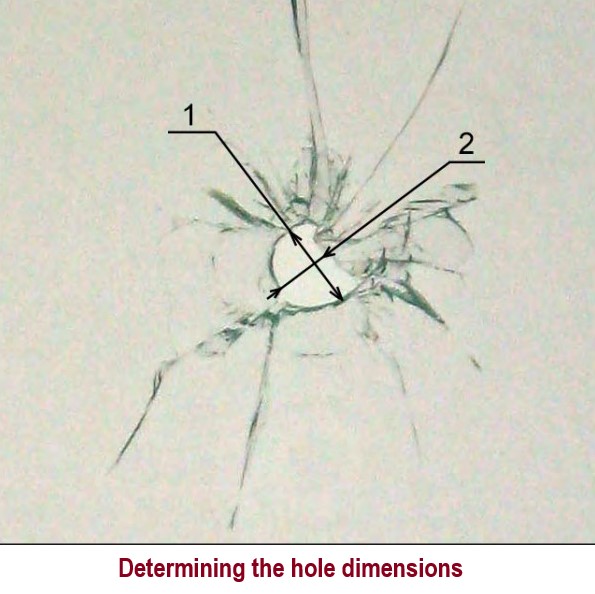
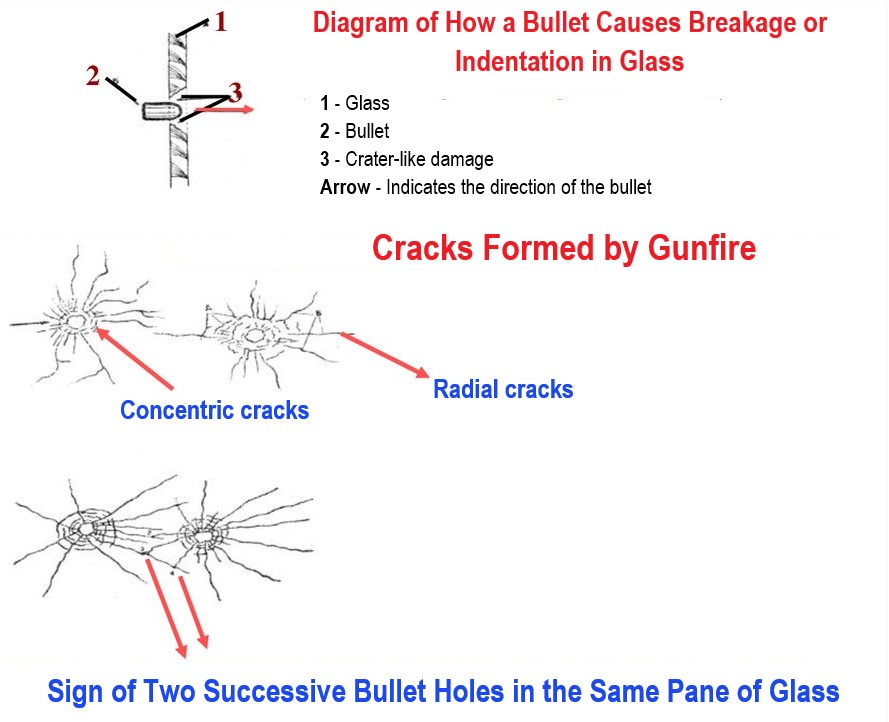
All of that was stated to create a general picture. Now let us move on to the most important point.
The photo presented by the Armenian side depicts a bullet hole in the window and the damage to the wall.
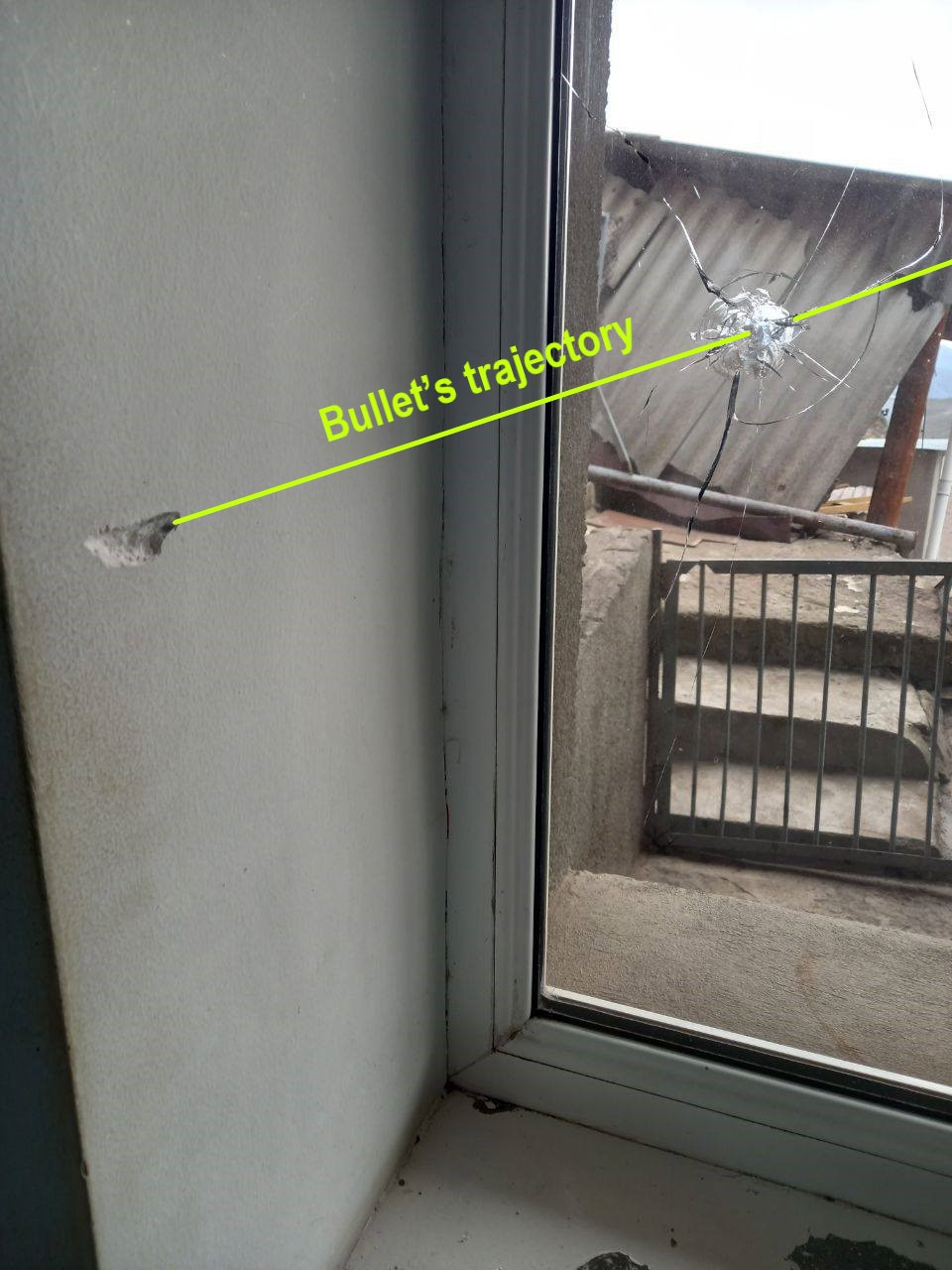
This diagram shows the angle and direction from which the bullet was fired.
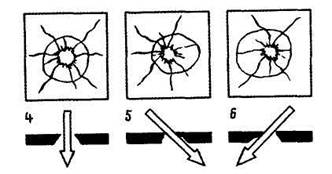
Let us compare both images:
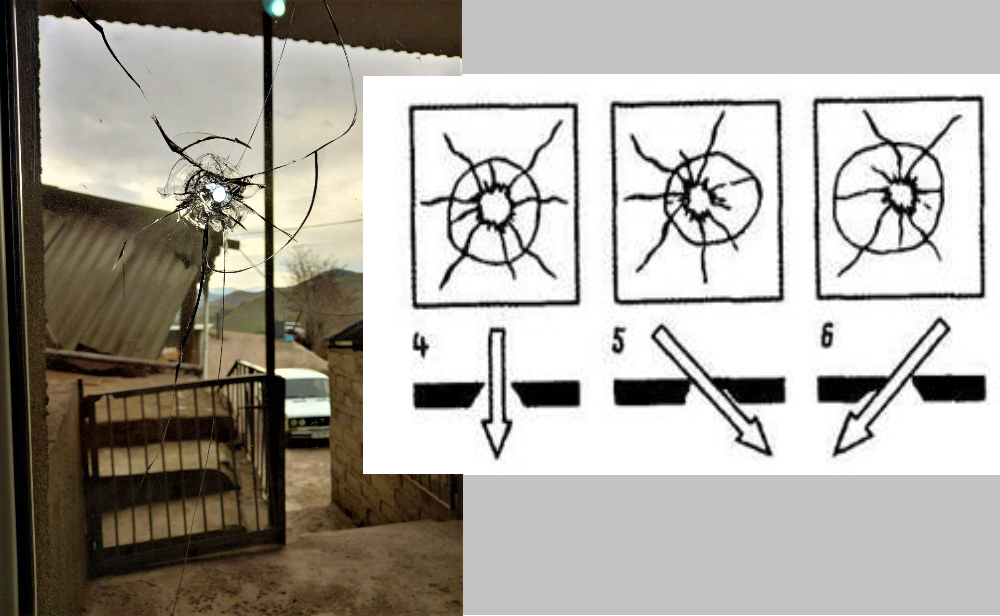
The bullet hole in the window clearly matches pattern 5 in the diagram:
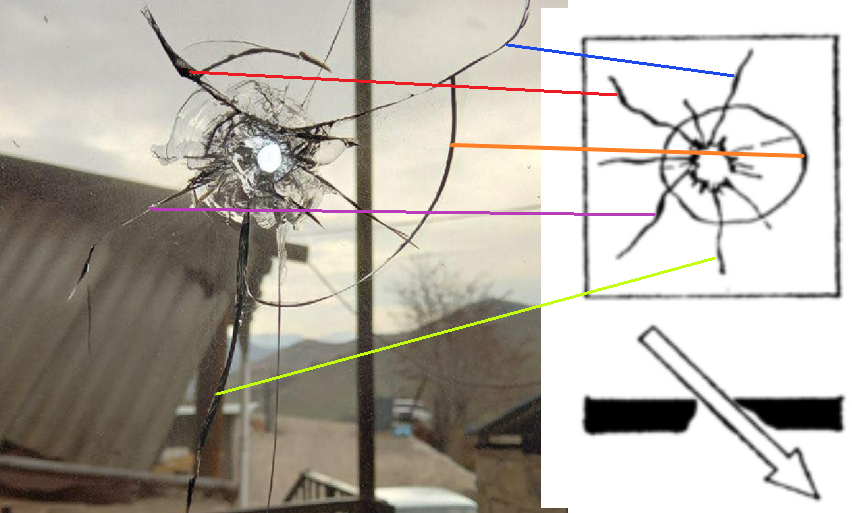
According to forensic rules, the radial distribution of cracks and the angle of the bullet hole towards the left corner suggest that the shot was fired from the left side. However, an analysis of the photo released by the Armenian Ministry of Defense reveals that the shot was actually fired from the right side. This leaves only one conclusion: the shot could not have been fired from the Azerbaijani side!
On the other hand, the size of the hole created by the bullet in the wall, the entry hole in the glass, and other factors provide clues about the direction from which the shot was fired. Let's try to explain this.
The editorial staff also consulted foreign experts to ensure a fair analysis. Ultimately, the following conclusion was reached: there are three key elements in the analysis of the damaged glass.
1. Central Fracture (damage and fissures caused by the bullet in the glass)
The protrusions along the edges of the fracture are smooth, and the fissures are clearly visible. This suggests that the bullet passed through the glass at high speed. The clearly visible hole in the center indicates that the glass was not armored and that the bullet did not undergo significant deformation upon impact.
2. Radial fractures
Typically, long, distinct lines form during high-velocity impacts. The greater the number of cracks, the higher the speed at which the bullet made contact. At this point, we present the indicators of the kinetic energy affecting the barrier when the shot is fired from various distances using a Kalashnikov rifle:
a) For Kalashnikov automatic rifle (AK-74 and AKS-74)
•Bullet with steel core
•Bullet weight: 3.4 g
•Muzzle velocity: 900 m/s
•Angle of departure: -4 min
•Muzzle energy: 140 kg·m
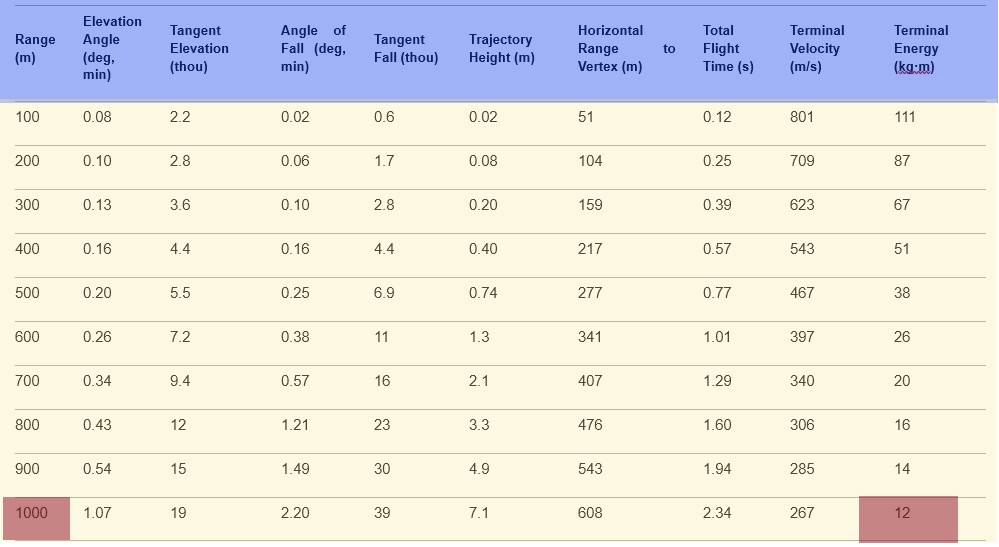
Looking at the table, we can see that when the distance exceeds 1,000 meters, the bullet's kinetic energy significantly decreases, dropping to as low as 12 kg·s·m. In other words, in our case, the bullet passed through the glass with high kinetic energy. Small glass protrusions, particles, and the material scattered to the opposite side (visible around the hole) suggest that the bullet pierced the glass rather than becoming lodged in it.
3.Concentric fractures and glass fragments.
It can be concluded that if the shot was fired from an AK74 rifle (7.62×39 mm):
• If the shot was fired from a very close distance (up to 50 meters), the cracks would be larger, and larger glass fragments would fall. This is not observed in this case.
• If the shot was fired from a distance of 50 to 150 meters, medium-sized cracks would form, but the bullet would still penetrate the target with high energy.
• At distances greater than 200 meters, the glass absorbs more energy, resulting in fewer noticeable cracks.
Based on the shape of the hole, the number of cracks, and the displacement of the glass, it can be concluded that the shot was fired from a distance of 100-150 meters.
At this point, it is worth recalling a study conducted by Pakistan’s National Forensic Science Agency, which, among other topics, focused on determining the distance from which the shot was fired based on the parameters of the holes in the glass.
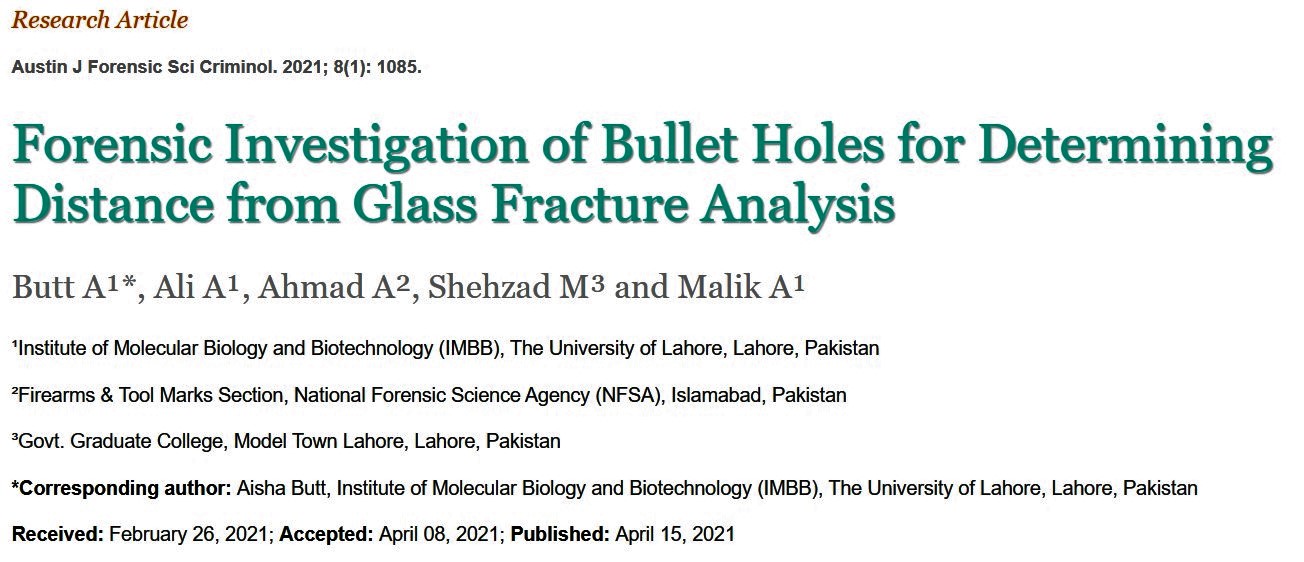
Experiments have shown that the size of the hole created in the glass by the shot varies with distance. For example, when a shot is fired from a .30 bore handgun, the diameter of the hole changes relative to the distance. Specifically, a larger hole is formed at closer distances, while the size decreases as the distance from the firing point increases.
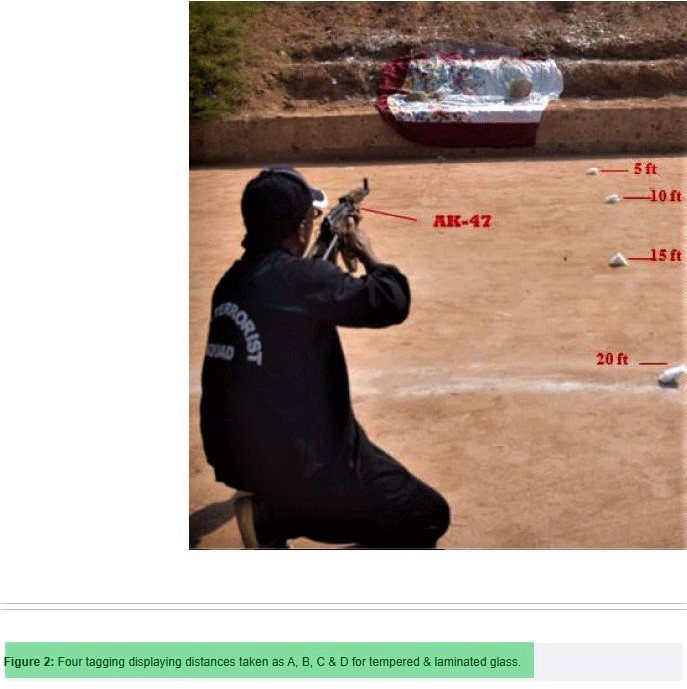
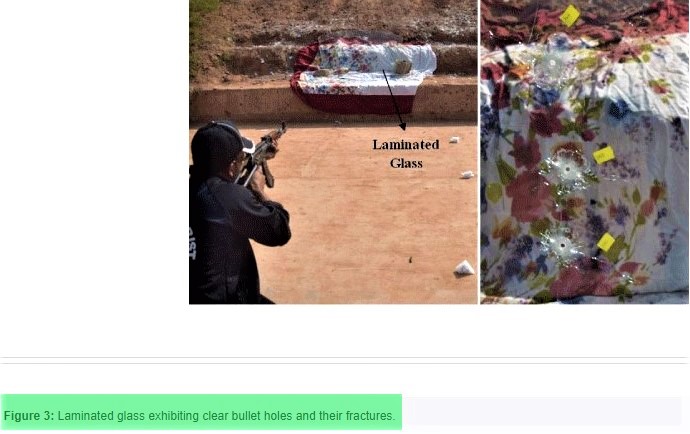
The same experiment was conducted with the AK47 assault rifle, and the results were consistent with those observed during testing of the previous weapon. It has thus been concluded that by determining the bullet's caliber and impact angle, it is possible to estimate the distance. For this purpose, the diameter of the hole created and other indicators can be added to a table to help determine the distance.
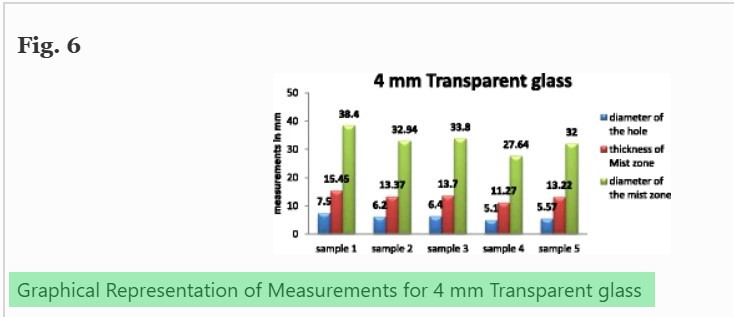
Let’s verify this fact using another method.
Method 3. Mathematical calculations.
First, let’s calculate the length of the bullet’s trajectory, ignoring wind resistance:
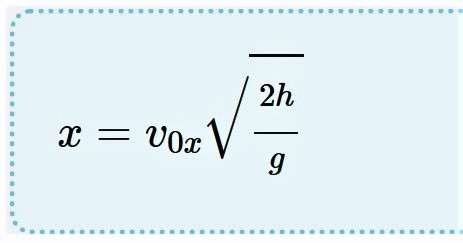
Here, V₀x represents the initial velocity of the bullet (900 m/s for a Kalashnikov rifle), h is the height of the firing point (1,409 meters), and g is the acceleration due to gravity, which is 9.8 m/s².
This formula, on the other hand, takes into account weather conditions, glass resistance, flight time, and the bullet's weight.
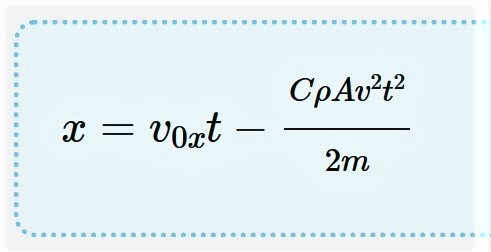
Here, C is the bullet’s drag coefficient (0.295), ρ is the air density (1.27 kg/m³), A is the bullet’s cross-sectional area (7.62 × 10⁻⁵ m²), t is the flight time (0.452 seconds), and m is the bullet’s mass (0.034 kg).
When these values are inserted into the formula, the result is approximately 118.5 meters.

Thus, the shot that struck the window glass, as seen in the image released by the Armenian side, was fired from a distance of approximately 118 meters. However, according to Google Earth, the nearest Azerbaijani Armed Forces position is 2,404 meters away from that house. This stark contrast between our mathematical calculation and the actual geographic distance raises serious questions about the origin of the shot.
By the way, readers who prefer to avoid lengthy mathematical calculations can easily perform them online through this website.
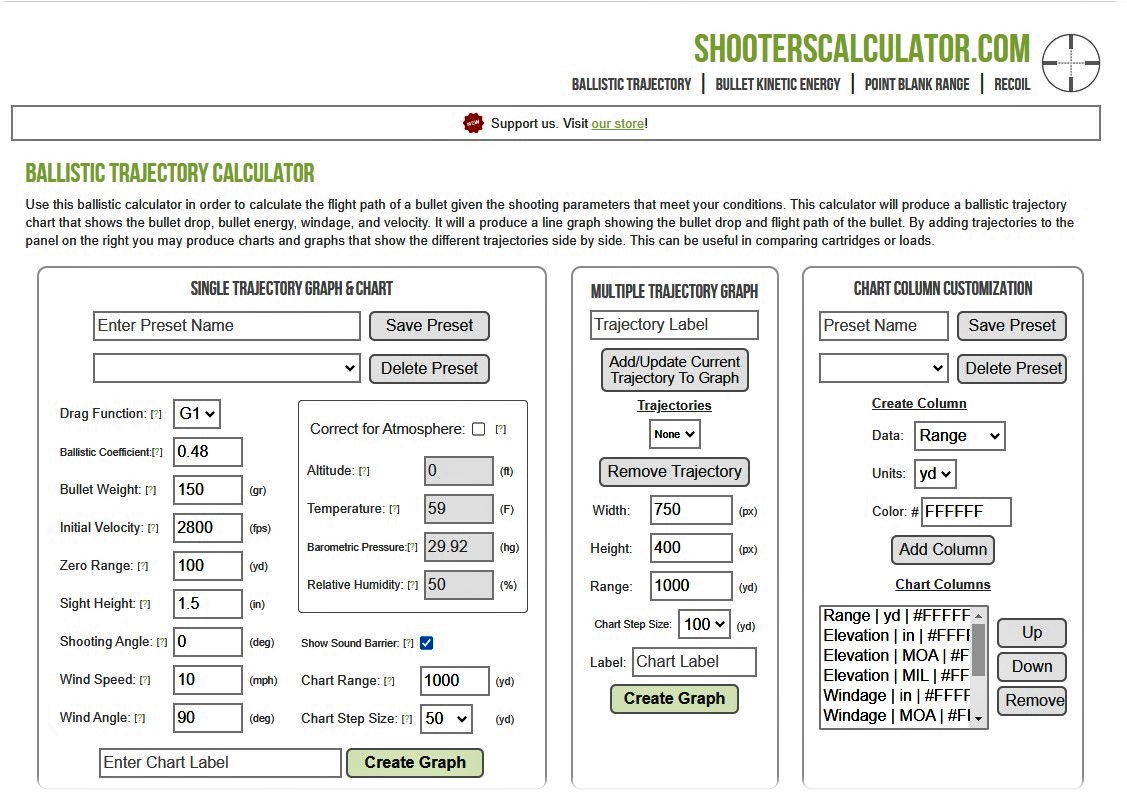
Conclusion:
• The information spread by Armenia regarding the alleged shelling of the Khnatsakh village by Azerbaijani Army units is baseless, completely false, and constitutes an act of disinformation.
• This is yet another attempt by the Armenian leadership to deceive the international community through speculation and falsification.
• In this manner, Armenia, which routinely tries to cover up its provocations - including shelling Azerbaijani Army units and conducting reconnaissance flights over our positions using unmanned aerial vehicles (UAVs) and drones - is attempting to conceal its actions.




















